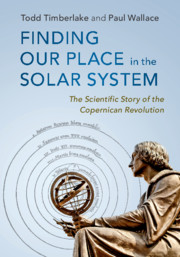Book contents
- Frontmatter
- Dedication
- Contents
- Preface
- 1 Introduction: mysterious skies
- 2 Two spheres: modeling the heavens and the Earth
- 3 Wanderers: the Moon and the planets
- 4 An Earth-centered cosmos: astronomy and cosmology from
- 5 Moving the Earth: the revolutions of Copernicus
- 6 Instruments of reform: Tycho’s restoration of observational
- 7 Physical causes: Kepler’s new astronomy
- 8 Seeing beyond Aristotle: Galileo’s controversies
- 9 The system of the world: Newton’s universal physics
- 10 Confirming Copernicus: evidence for Earth’s motions
- Appendix Mathematical details
- Notes
- References
- Index
3 - Wanderers: the Moon and the planets
Published online by Cambridge University Press: 18 March 2019
- Frontmatter
- Dedication
- Contents
- Preface
- 1 Introduction: mysterious skies
- 2 Two spheres: modeling the heavens and the Earth
- 3 Wanderers: the Moon and the planets
- 4 An Earth-centered cosmos: astronomy and cosmology from
- 5 Moving the Earth: the revolutions of Copernicus
- 6 Instruments of reform: Tycho’s restoration of observational
- 7 Physical causes: Kepler’s new astronomy
- 8 Seeing beyond Aristotle: Galileo’s controversies
- 9 The system of the world: Newton’s universal physics
- 10 Confirming Copernicus: evidence for Earth’s motions
- Appendix Mathematical details
- Notes
- References
- Index
Summary
Like the Sun, the Moon moves eastward relative to the stars but at a faster rate, completing its motion in one month. The apparent motion of the Moon relative to the Sun produces the cycle of lunar phases as well as both lunar and solar eclipses. Ancient Greek mathematicians devised ways of estimating the distances and sizes of the Sun and Moon from observational data, including the phenomenon of parallax. The planets, too, appear to move relative to the stars. They generally move eastward relative to the stars but occasionally they halt their eastward motion and move westward (in retrograde motion) before resuming their normal eastward trek. The planets can be classified into two groups, inferior and superior, each of which displays certain characteristics of motion.
- Type
- Chapter
- Information
- Finding our Place in the Solar SystemThe Scientific Story of the Copernican Revolution, pp. 49 - 70Publisher: Cambridge University PressPrint publication year: 2019

